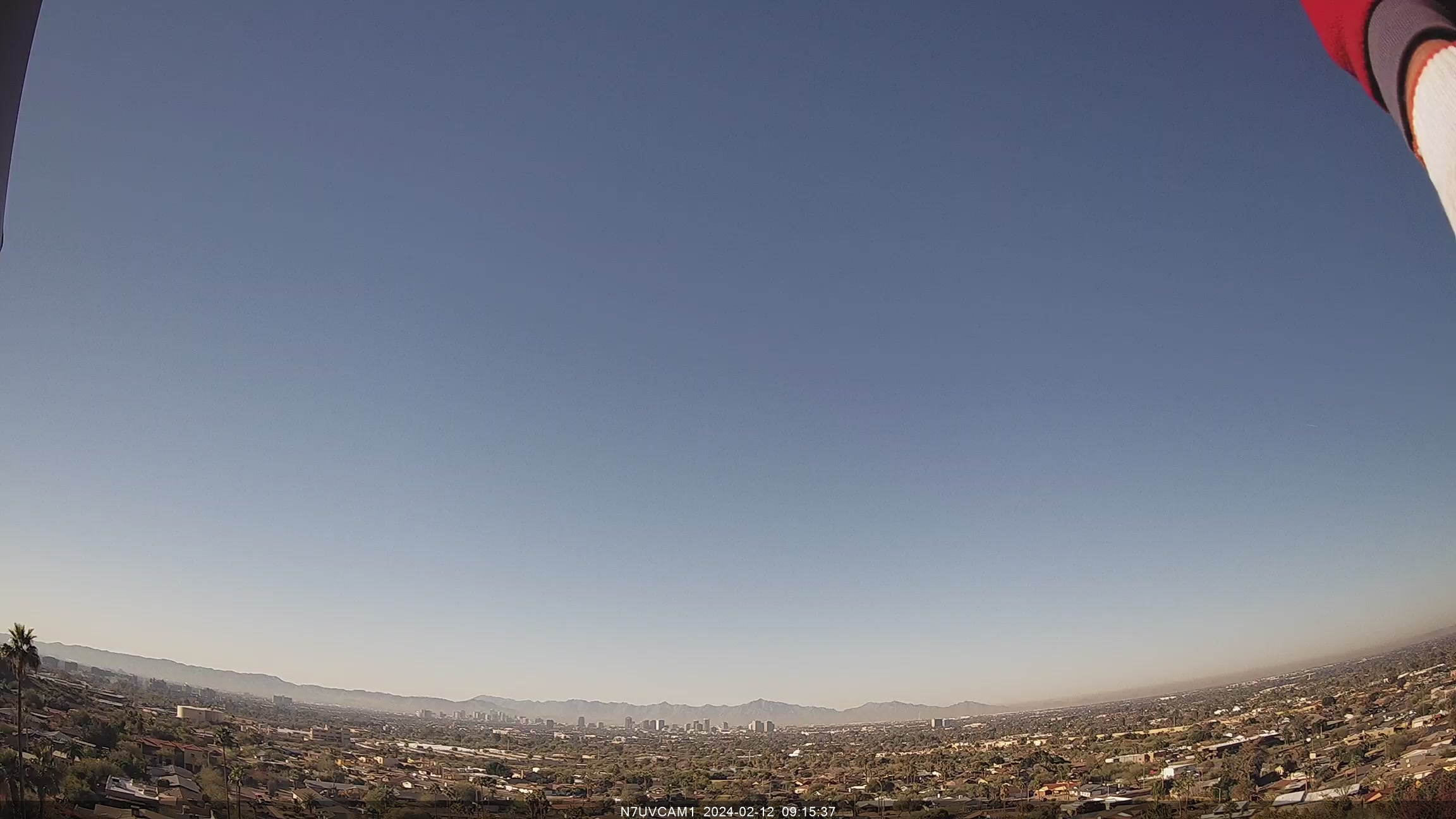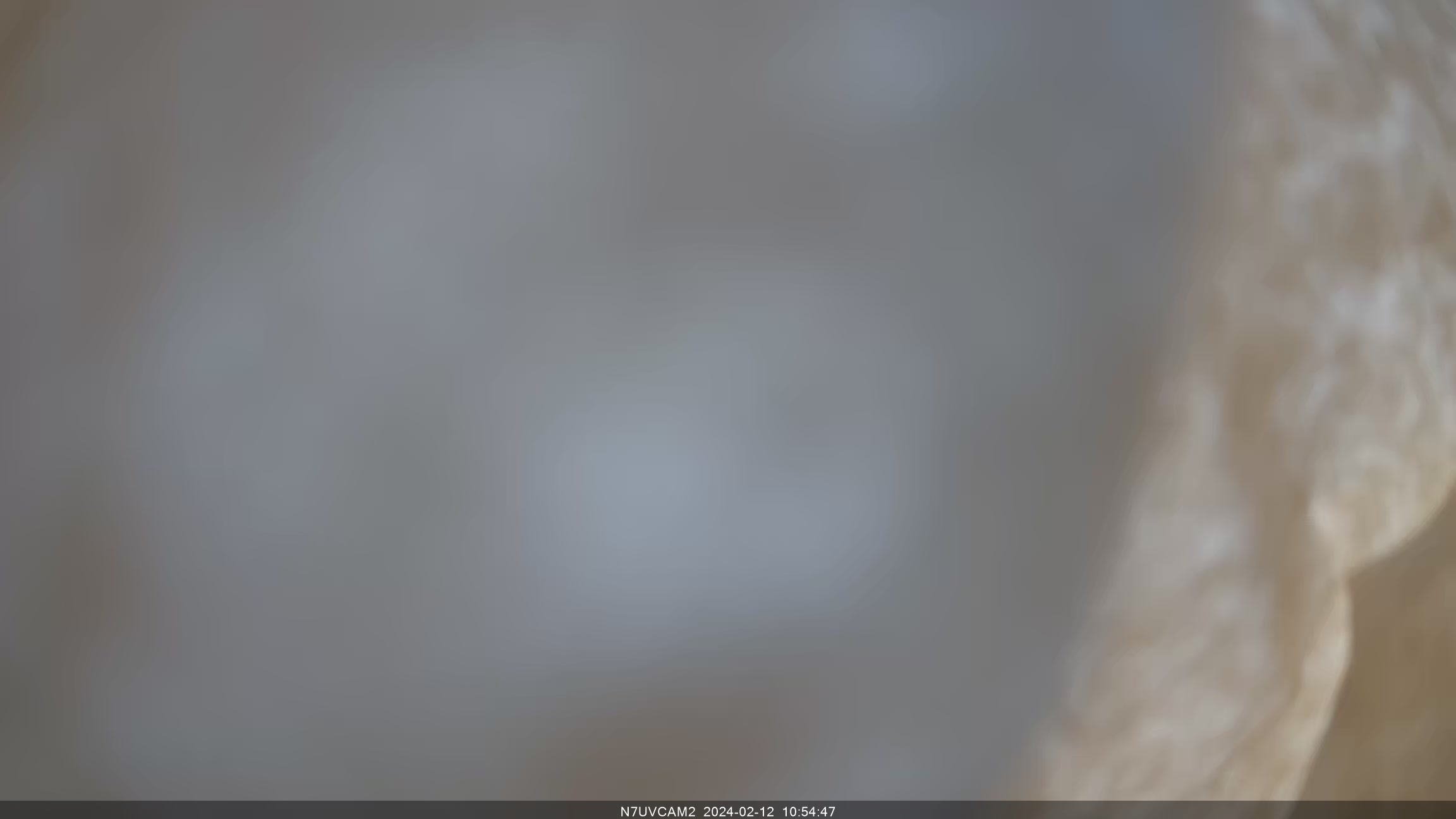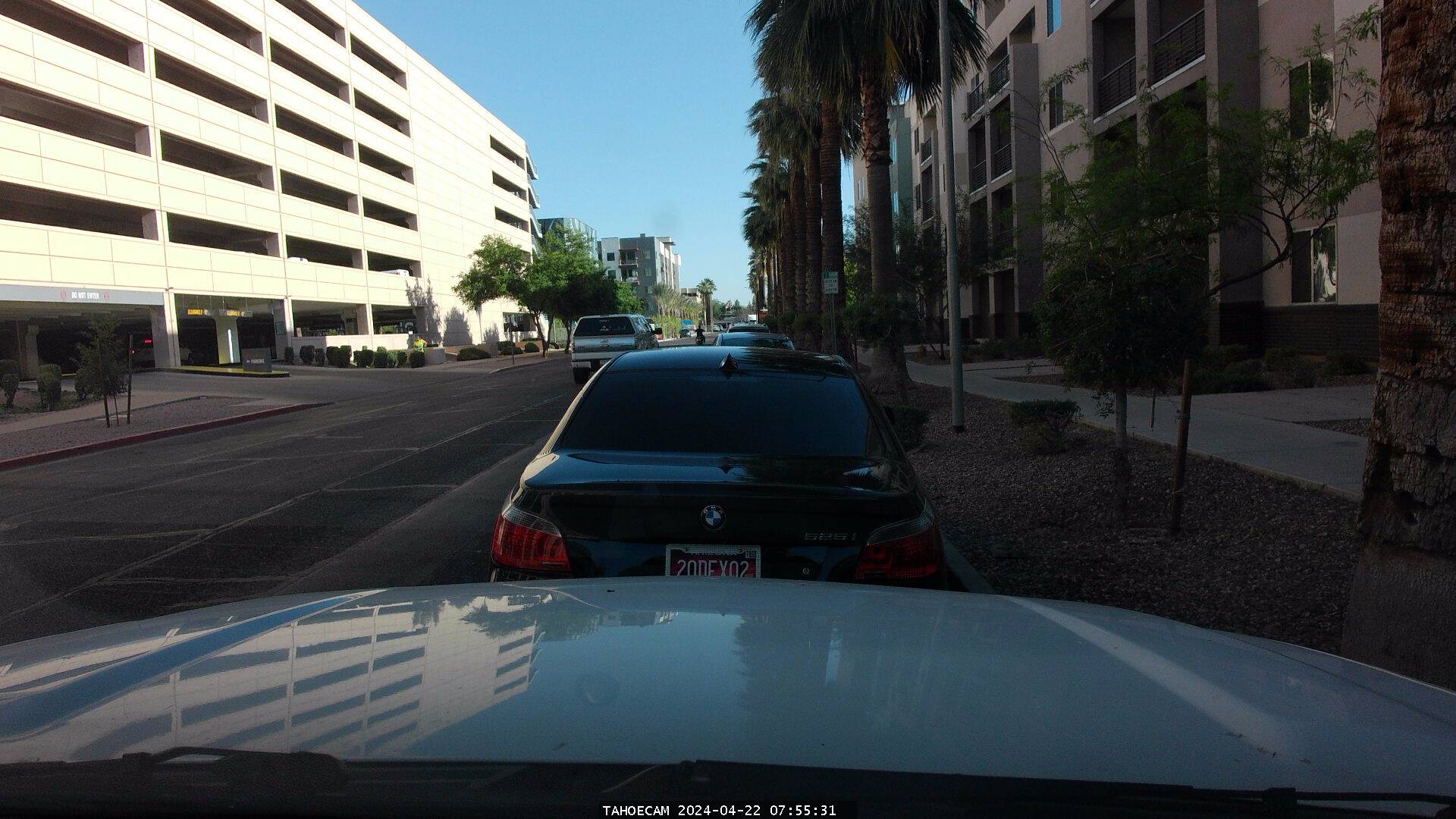
Sony 1/2.5" CCD sensor, 4mm F1.4 lens - center of image is 000° AZ x 25° EL

Sony 1/2.5" CCD sensor, 12 mm F1.4 lens on a panning mount

Both N7UVCAM1 and N7UVCAM2 are identical wire-networked outdoor IP cameras. Each has a Sony 1/2.5" CCD sensor, and an auto-IR-cut filter BW / Color switch based upon ambient light. The cameras, found new on eBay, don't have an obvious brand or model number marked on them or on the box in which each was shipped. In the supplied Windows Camera Management Software (CMS) tool, it suggests that it may be a vendor called H264DVR. The quality of the images, and the nighttime performance without IR illuminators, make this camera a relatively good find. However, to get this, it took some minor DIY work on the camera.
The software used is IPTimeLapse Webcam, a very nice webcam software tool from Sebectec, LLC. The software uses the rtsp:// method to communicate with the camera. The camera is on the roof, co-mounted with the Davis Weather Station.
N7UVCAM1 is aimed true north. On the vertical centerline, the top of the frame is about 46 degrees above the horizon, while the frame bottom is about 3 degrees above the horizon. Due to nearby trees and foliage, the ground horizon is obscured. Note there is some off-center visual field distortion due to the 4 mm lens.
Polaris (Alpha Ursae Minoris), magnitude +1.98 and spectral type F7, and currently the northern hemisphere's pole star, is visible nearly any cloudless night centered left-right and about 1/3 of the way down from the top of the frame. Over the length of the night, Polaris will trace a portion of a very small circle about 34 pixels in diameter. The camera is generally able to see stars as dim as magnitude +4 or so. However, using the RSTP:// method to grab frames seems to get images that don't take advantage of the camera's high light sensitivity, so it's hard to see here. Perhaps one of these days I'll create a live video link.
The nightime view as seen by N7UVCAM1 camera is remarkably unspectacular. Stars brighter than about magnitude +1.7 (Dubhe in Ursa Majoris), and obviously the planets, Moon and Sun, will never be in the field of view. Deneb, the brightest star in the constellation Cygnus, might be briefly visible in the lower right corner of the frame sometime in the late spring, which would make it the brightest star ever visible in the field of view.
Perhaps not suprisingly, the camera appears to be more sensitive to redder stars, as Kochab (mag +2.08, K4) is always seen by the camera as to be significantly brighter than Polaris.
The camera instructions for setting the various parameters are vague at best.

TahoeCam is a Mobius ActionCam configured as a USB webcam, connected to an embedded Windows 7 PC running full time in the truck. The software used to access and post the images is YAWCAM, which has been exceedingly reliable.
- Wardriving Test Loop in Tempe, 14 MAR 2015 (exactly 1.0 miles in length, no stop signs!)
- Wardrive to and from Peoria Artisan Brewery, 21 MAR 2015
- Off-pavement portion of the drive to and from White Tank Mountains East Peak, 20 MAR 2016
- Iridium 55 Satellite Flare, 27MAR16@025305
- Another trip to the top and back of White Tank, 17 APR 2016
- Trip to and down Pinal Peak for KD7DR (SK) celebration, 10 SEP 2016
Railroading - Cool Links - Work - Words
Mountain Biking - jonCams - Thesis - WiFi
jon (at) jonadams (dot) com